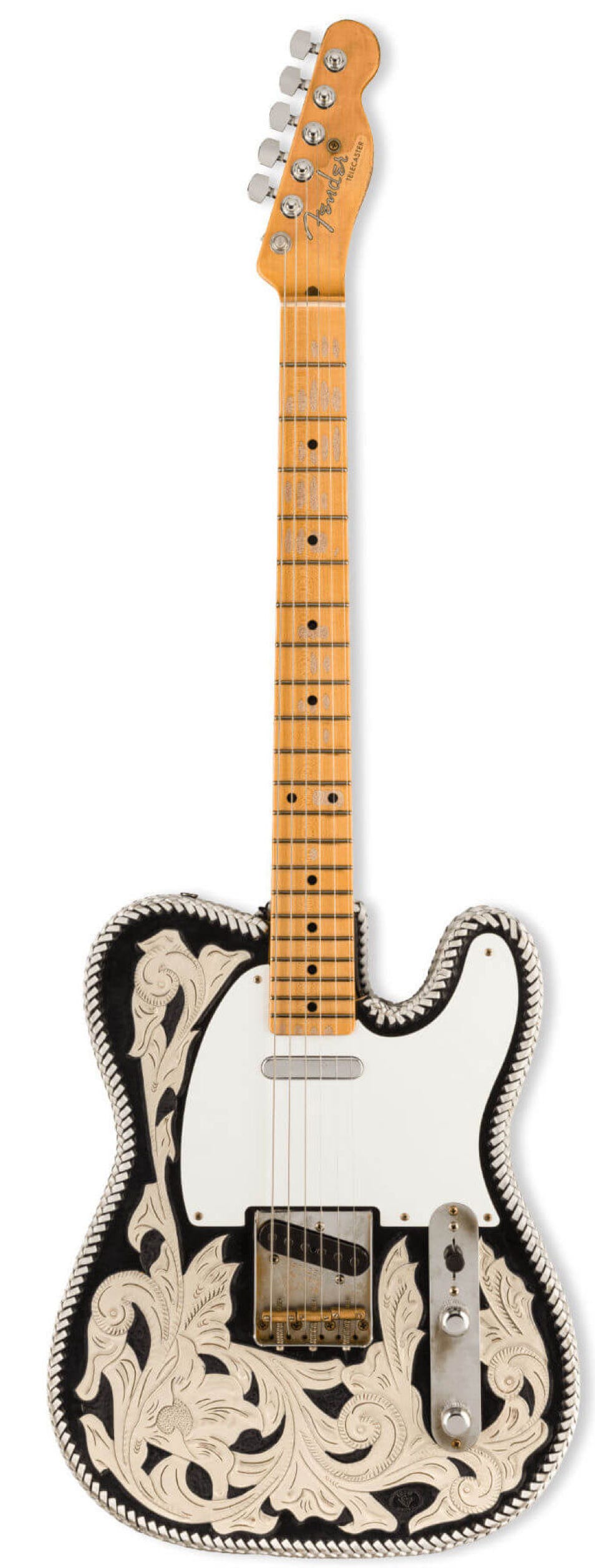CUSTOM SHOP GUITARS can be presented in three groups:
TEAMBUILT
The team built guitars is what you see the majority of here. Every year, the Custom Shop team makes a yearly selection of guitar they want to build for their yearly collection. This is often based on what dealers require. Many units of each models are made in a joint collaboration (hence, the term Teambuilt)
These guitars are then distributed worldwide for sale at vendors. So when you go to a store and see a selection of Custom Shop on the wall, you are browsing the teambuilt models. Almost the same as browsing regular USA Strats, just more limited selection, and more expensive.
MASTERBUILT
Masterbuilt is made by a singular Custom Shop luthier. You can divide Masterbuilt into two sub-categories:
Masterbuilt by customer is simply a one-of-a-kind. You go to a dealer, you fill out a spec sheet of your dream guitar and they order it for you. You wait 1-2 years and you get it.
Materbuilt for distributions are several Signatures or unique ideas. You find a few on my chronology. Each model are made in units in anything from 10 to 100 guitars, and its first come serve. Go to a store and order it and hope the have more left of it. Masterbuilt can be built over a period of time over 1-2 years. So they can be sold out, but more can be made over time. Contact Custom Shop to ask for status.
PRESTIGE
These are unique, one-of-a-kind models. The absolute pinacle of builds. Every now and then, a select group of CS Luthiers get to have a crack at building something unique where they use their skills and imagination. Many of them in collaborations with artist like painters and such. Prestiges are often made for showcasing at guitar shows like NAMM, and often just for a showcase to present at Fender website. Dealers that attend these shows can put in an order for this guitar and sell it trough their websites. Its a prestigious thing. They can also bid to buy if presented on their website.
These are highly expensive guitars that usually starts at $10.000 or so. So they are more for the player with exquisite taste and fat wallets..
Be aware that most teambuilt models can appear in other finishes and colors as well then those presented. The exceptions are Signature and Masterbuilt guitars.
Limited Edition Series (2023)

Colors:
Model# 921-6061-537 (Relic)
BODY
Wood: 2-Piece Select Ash
Lacquer: Nitrocellulose
Other: Wrapped with Black Leather w/ White Tooled Leather Top
Shape: Standard Telecaster/ Commemorative Gold Plaque on the side
Pickguard: 1-Ply Parchment / 5-hole
Serial: R+6 digits (Bridge)
NECK
Wood: 1-Piece Quartersawn Maple
Fretboard: Quartersawn Maple
Lacquer: Nitrocellulose
Profile: 10/56 "V"
Inlays: Micarta Black Dot
Headstock: Standard Telecaster
Nut Width: 1.620" (41.15mm)
Nut Material: Bone
Scale: 25.5"
Radius: 7.25"
#Frets: 21
Fretwire: Jescar 45085 Vintage Tall
Trussrod: Heel Adjust
MicroTilt: No
Contoured Heel: No
HARDWARE
Bridge Type: 3-Saddle Vintage String-Thru
Bridge Marking: FENDER Pat.Pend + Serial#
Saddles: Brass Barrel Saddles
Tuners: Schaller M6 tuners with Low-E Scruggs banjo tuner
String Tree: 50s Round Button
Knobs: KnurledDome
Neckplate: 4-Bolt Blank Aged Plate
ELECTRONICS
Switch: 3-Way CRL /Barrel Switch Tip
Wiring: Modern Std: N/NB/B
Pots: Master Volume / Master Tone
Pickup Config: SS
Neck Pickup: Custom Shop Hand-Wound ‘50/’51 Blackguard
Bridge Pickup: Custom Shop Hand-Wound ‘50/’51 Blackguard
Masterbuilder: Dave Brown
Leather Work: Cody Hickson | Great Point Leatherworks
Case: Custom Western Patern Tolex Case / Crushed Orange Interior
Case Candy: Additional White Leather Tooled Pickguard + Waylon Jennings
Leather Strap
PRICE: $25.000 +/-
#Built: 70 guitars For Worldwide Distribution
DESCRIPTION:
An exacting tribute to Waylon Jennings’ iconic #1 Telecaster as it would look in the early to mid-70s,
built by Fender Master Builder David Brown with input from the Jennings family.
The guitar was made with details from Waylons two main guitars.
Blends the looks of Waylon’s original 1954 leather-bound Telecaster with the electronics of one of his later Telecasters to provide a snapshot of how the guitar would have looked in the late 1970s